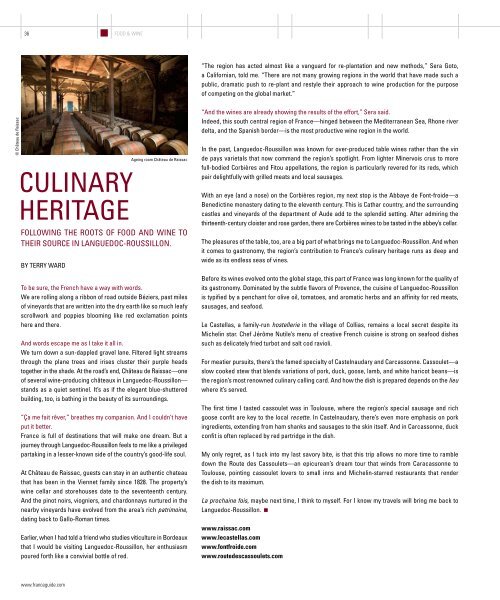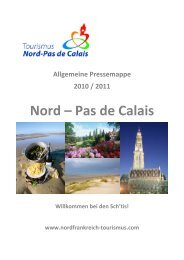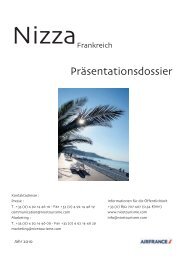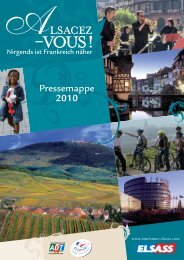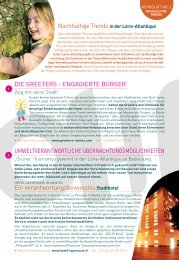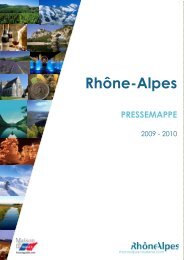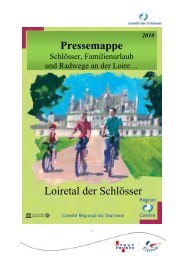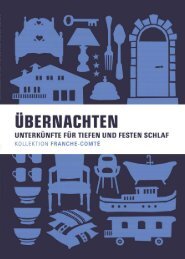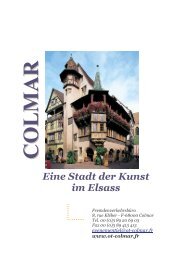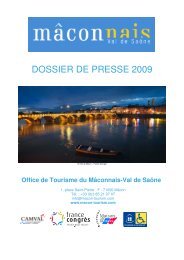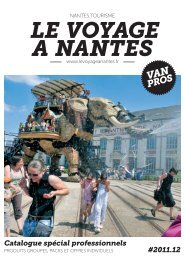Picasso Normandy Landings Leslie Caron Les Apéritifs Eco-Friendly
Picasso Normandy Landings Leslie Caron Les Apéritifs Eco-Friendly
Picasso Normandy Landings Leslie Caron Les Apéritifs Eco-Friendly
You also want an ePaper? Increase the reach of your titles
YUMPU automatically turns print PDFs into web optimized ePapers that Google loves.
© Château de Raissac<br />
36<br />
By TERRy WARD<br />
To be sure, the French have a way with words.<br />
We are rolling along a ribbon of road outside Béziers, past miles<br />
of vineyards that are written into the dry earth like so much leafy<br />
scrollwork and poppies blooming like red exclamation points<br />
here and there.<br />
And words escape me as I take it all in.<br />
We turn down a sun-dappled gravel lane. Filtered light streams<br />
through the plane trees and irises cluster their purple heads<br />
together in the shade. At the road’s end, Château de Raissac—one<br />
of several wine-producing châteaux in Languedoc-Roussillon—<br />
stands as a quiet sentinel. It’s as if the elegant blue-shuttered<br />
building, too, is bathing in the beauty of its surroundings.<br />
“Ça me fait rêver,” breathes my companion. And I couldn’t have<br />
put it better.<br />
France is full of destinations that will make one dream. But a<br />
journey through Languedoc-Roussillon feels to me like a privileged<br />
partaking in a lesser-known side of the country’s good-life soul.<br />
At Château de Raissac, guests can stay in an authentic chateau<br />
that has been in the viennet family since 1828. The property’s<br />
wine cellar and storehouses date to the seventeenth century.<br />
And the pinot noirs, viogniers, and chardonnays nurtured in the<br />
nearby vineyards have evolved from the area’s rich patrimoine,<br />
dating back to Gallo-Roman times.<br />
Earlier, when I had told a friend who studies viticulture in Bordeaux<br />
that I would be visiting Languedoc-Roussillon, her enthusiasm<br />
poured forth like a convivial bottle of red.<br />
www.franceguide.com<br />
fOOd & wINe<br />
CuLInARy<br />
HERITAGE<br />
Ageing room Château de Raissac<br />
FOLLOWInG THE ROOTS OF FOOD AnD WInE TO<br />
THEIR SOuRCE In LAnGuEDOC-ROuSSILLOn.<br />
“The region has acted almost like a vanguard for re-plantation and new methods,” Sera Goto,<br />
a Californian, told me. “There are not many growing regions in the world that have made such a<br />
public, dramatic push to re-plant and restyle their approach to wine production for the purpose<br />
of competing on the global market.”<br />
“And the wines are already showing the results of the effort,” Sera said.<br />
Indeed, this south central region of France—hinged between the Mediterranean Sea, Rhone river<br />
delta, and the Spanish border—is the most productive wine region in the world.<br />
In the past, Languedoc-Roussillon was known for over-produced table wines rather than the vin<br />
de pays varietals that now command the region’s spotlight. From lighter Minervois crus to more<br />
full-bodied Corbières and Fitou appellations, the region is particularly revered for its reds, which<br />
pair delightfully with grilled meats and local sausages.<br />
With an eye (and a nose) on the Corbières region, my next stop is the Abbaye de Font-froide—a<br />
Benedictine monastery dating to the eleventh century. This is Cathar country, and the surrounding<br />
castles and vineyards of the department of Aude add to the splendid setting. After admiring the<br />
thirteenth-century cloister and rose garden, there are Corbières wines to be tasted in the abbey’s cellar.<br />
The pleasures of the table, too, are a big part of what brings me to Languedoc-Roussillon. And when<br />
it comes to gastronomy, the region’s contribution to France’s culinary heritage runs as deep and<br />
wide as its endless seas of vines.<br />
Before its wines evolved onto the global stage, this part of France was long known for the quality of<br />
its gastronomy. Dominated by the subtle flavors of Provence, the cuisine of Languedoc-Roussillon<br />
is typified by a penchant for olive oil, tomatoes, and aromatic herbs and an affinity for red meats,<br />
sausages, and seafood.<br />
Le Castellas, a family-run hostellerie in the village of Collias, remains a local secret despite its<br />
Michelin star. Chef Jérôme nutile’s menu of creative French cuisine is strong on seafood dishes<br />
such as delicately fried turbot and salt cod ravioli.<br />
For meatier pursuits, there’s the famed specialty of Castelnaudary and Carcassonne. Cassoulet—a<br />
slow cooked stew that blends variations of pork, duck, goose, lamb, and white haricot beans—is<br />
the region’s most renowned culinary calling card. And how the dish is prepared depends on the lieu<br />
where it’s served.<br />
The first time I tasted cassoulet was in Toulouse, where the region’s special sausage and rich<br />
goose confit are key to the local recette. In Castelnaudary, there’s even more emphasis on pork<br />
ingredients, extending from ham shanks and sausages to the skin itself. And in Carcassonne, duck<br />
confit is often replaced by red partridge in the dish.<br />
My only regret, as I tuck into my last savory bite, is that this trip allows no more time to ramble<br />
down the Route des Cassoulets—an epicurean’s dream tour that winds from Caracassonne to<br />
Toulouse, pointing cassoulet lovers to small inns and Michelin-starred restaurants that render<br />
the dish to its maximum.<br />
La prochaine fois, maybe next time, I think to myself. For I know my travels will bring me back to<br />
Languedoc-Roussillon.<br />
www.raissac.com<br />
www.lecastellas.com<br />
www.fontfroide.com<br />
www.routedescassoulets.com


